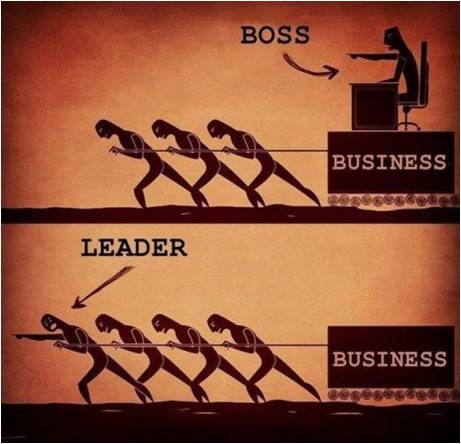agile adjective
UK /ˈædʒ.aɪl/ US /ˈædʒ.əl/
agile adjective (PHYSICALLY)
able to move your body quickly and easily:
Monkeys are very agile climbers.
You need to have agile fingers to do this kind of work.
(https://dictionary.cambridge.org/dictionary/english/agile)
Antonyms for agile
apathetic, depressed, dispirited, down, dull, ignorant, inactive, lazy
(http://www.thesaurus.com/browse/agile?s=t)
Honestly, I did not know this word well. I think I met this word first during Design Thinking Module. It was talking about reaction about the noisy automatic window system and Alice mentioned the word. I searched dictionary to find the meaning of agile. However, this word is friendly now.
In 2010, Agile Project Management was launched from DSDM, Dynamic Systems Development Method(1944) which was usually applied in IT project. Because of the name itself, it can be understood as a way of management to make project done rapidly. However, it is just a part of AgilePM. It’s like a bulletproof management. However, I think this is mainly about how to communicate with inside and outside of the organization successfully and effectively.

AgilePM’s philosophy is from that of DSDM.
“best business value emerges when projects are aligned to clear business goals, deliver frequently and involve the collaboration of motivated and empowered people”
This is achieved when all stakeholders can understand business vision and objectives and collaborate to deliver a fit solution and timescales depending on business priorities. And need to accept that the change is welcomed since it’s inevitable as an understanding of the solution grows over time. This philosophy is supported 8 principles: Focus on Business Need, Deliver on time, Collaborate, Never compromise Quality, Build incrementally from firm foundations, Develop Iteratively, Communicate Continuously and Clearly and Demonstrate Control.(The DSDM Agile Project Framework, 2014)
Looking at ‘Collaborate’ more, stakeholders and team members are fully empowered and involved based on shared understanding. Below are what teams need to do to achieve in terms of successful collaboration.
– Involve right stakeholders at the right time throughout the project
– Encourage proactive involvement from the business representatives
– Ensure that all team members are empowered to take decisions on behalf of those they represent
– Build one-team culture
– team must work together in a supportive manner to share ownership, increased understanding and greater productivity.(The DSDM Agile Project Framework, 2014)
As I studied Agile Project Management, at first I was curious about documenting. Recently, in the organization, there is some air from young people to think paperwork is old-fashioned. For example, we make a weekly report in every team. Some people think this job is just a paperwork and not meaningful so this is on the list as a wasteful work to dismiss when getting opinions from colleagues to innovate the organization. However, I think it is minimum requirements to share information and the proceed of several projects for a big company and organization among staff and leaders. Personally, it helps to review what I have done and think what should I do. However, this is importantly required to track the progress of the project even in Creative work. According to Agile PM, documenting lean and timely is necessary to communicate continuously and clearly.
Secondly, this reminds my team leader, Mr.Cho a lot. He was saying(nagging) a lot to team members such as “do documenting” “give me a paper when you think it’s done around 70%”. hates having a meeting without bringing and papers. Also, He is a ‘servantleader’ as an “active participant, rather than a passive bystander”. He works so hard that we had to work hard because it gives some motivation. Even though I was not afraid of doing a hard project because I know that our team member will back-up and team leader can manage it.

Lastly, I would like to follow the way especially by “refinement stage of Timeboxing”. Timebox can be said as a (small) task structure consisting of Kick-off – Investigation – Refinement – Consolidation – Close-Out. Refinement stage starts from the base such as enough understanding and having a plan after knowing risk where Kick-off and Investigation stages built. Refinement is carrying development and testing iteratively. In this stage, a review has to be done in order to complete the work and to make this happen, communication is required otherwise we fail to meet the needs. However, this happens a lot. Sometimes, at this stage, according to Agile PM, we need to put 60% of efforts on this however, we only put 10~20 % due to time-issue(strange or unreasonable things happen a lot….. )We expect A, but A- or A0 is fine. Sometimes we can see C or D at final report meeting from the agency. I think I need to call often and see face to face in the future. It’s not giving pressure. It’s a normal process to lead a project successfully. Not only managing, it has a good approach to make a project successfully by iterating and testing we learned in Lean and Design Thinking method.

After finishing the journey to Agile Project Management, I think I can improve myself in terms of project management and enjoy to develop a project, especially at an executive stage after back to Seoul.
<reference>
DSDM Consortium, The DSDM Agile Project Framework(2014), available at: https://www.agilebusiness.org/resources/dsdm-handbooks/the-dsdm-agile-project-framework-2014-onwards